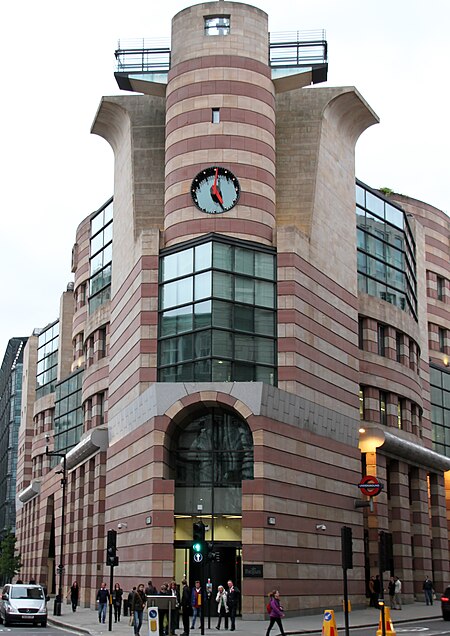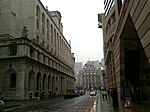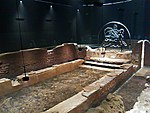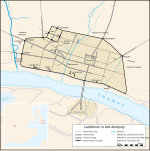No 1 Poultry

No 1 Poultry is a building in the City of London, allocated to office and commercial use. It occupies the apex where the eastern ends of Poultry and Queen Victoria Street meet at Mansion House Street, the western approach to Bank junction. The design, by James Stirling, was constructed after the architect's death. It replaced a neogothic, conical-turretted, predecessor retail building, owned by developer Rudolph Palumbo and subsequently by his son, developer Peter Palumbo. Another option was a modernist minor skyscraper designed by Ludwig Mies van der Rohe in the manner of the Seagram Building in New York City – but dropped having failed in an influential architectural and planning show-down in the 1970s. The tall but less towering design, in a postmodernist style with an outer shell of even bands of rose-pink and muted yellow stone, prevailed. The point of the apex, as before, has a clock face but higher, as above a large pointed apex set of 30 window panes. In 2016, the landowner proposed exterior alteration. Building users, experts and neighbours persuaded the experts at the designated UK body to protect and recognise the building and did so in the notable grade II* listed building category, making it, within England, the youngest at the time. The rooftop restaurant was used for the apparent Queen's helicopter departure point in the 2012 Summer Olympics opening ceremony.
Excerpt from the Wikipedia article No 1 Poultry (License: CC BY-SA 3.0, Authors, Images).No 1 Poultry
Poultry, City of London
Geographical coordinates (GPS) Address External links Nearby Places Show on map
Geographical coordinates (GPS)
| Latitude | Longitude |
|---|---|
| N 51.513333333333 ° | E -0.090833333333333 ° |
Address
No 1 Poultry
Poultry 1
EC2R 8AJ City of London
England, United Kingdom
Open on Google Maps










